European leaders worry they’re too reliant on U.S. tech
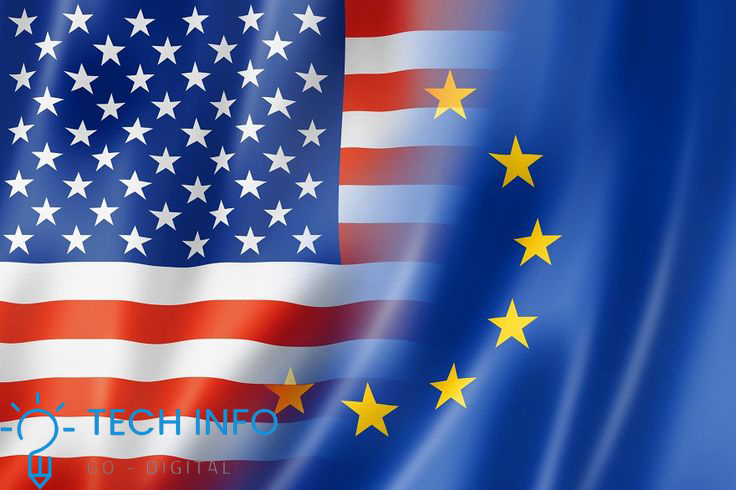
European Leaders Worry They’re Too Reliant on U.S. Tech – A Wake-Up Call for Digital Sovereignty In recent years, European leaders have grown increasingly uneasy about their continent’s overwhelming dependence on American tech giants like Google, Microsoft, Amazon, Meta, and Apple. From cloud infrastructure and artificial intelligence to digital advertising and search engines, the dominance of U.S. firms in Europe’s digital ecosystem has triggered a call for “digital sovereignty.” 🇺🇸 U.S. Tech: Backbone of European Systems? Much of Europe’s digital infrastructure is powered by U.S.-based companies. Major government services, financial systems, healthcare data, and corporate operations rely on platforms like Microsoft Azure, AWS, and Google Cloud. While these tools offer cutting-edge efficiency and innovation, they also raise critical concerns: 🛡️ The Push for Digital Sovereignty European policymakers are calling for reduced dependence on foreign tech firms and increased investment in homegrown technologies. This has led to strategic initiatives such as: 🇪🇺 The Challenges Ahead Despite ambitions, Europe faces stiff hurdles: 🔄 Dependency vs. Collaboration It’s not about cutting ties with the U.S.—but about balancing power. The goal is not isolationism, but resilience. Europe wants partnerships on equal footing, not dependencies. Many experts argue for building a transatlantic tech alliance based on shared values—democracy, privacy, and rule of law—while still encouraging Europe’s digital self-reliance. 🧠 Final Thoughts Europe’s tech future hinges on strategic autonomy. The current dependency on U.S. platforms is not just a business concern—it’s a sovereignty issue. The path forward involves:
Nvidia’s AI empire: A look at its top startup investments
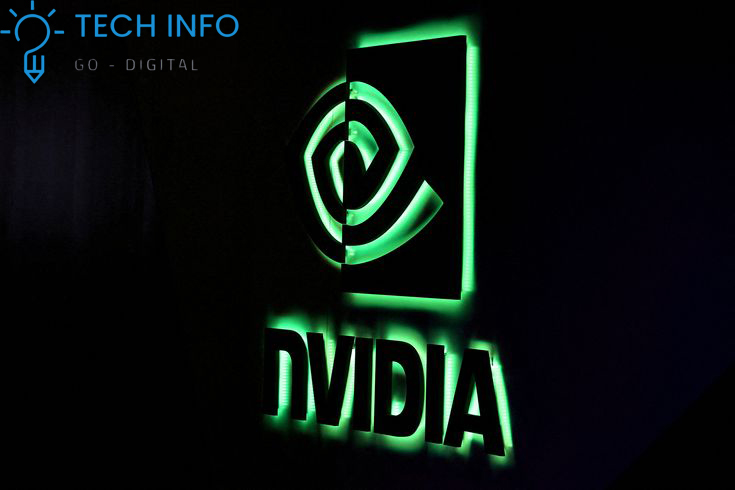
Introduction: Why Nvidia Invests in AI Startups Nvidia’s investment strategy goes beyond simple financial returns. The company is future-proofing its AI dominance by: ✅ Locking in GPU Demand – Startups using chips create long-term customers.✅ Shaping Industry Standards – Investments in AI frameworks (like CUDA) ensure Nvidia remains the default choice.✅ Acquisition Pipeline – Some startups (like DeepMap) later become Nvidia acquisitions.✅ Countering Rivals – Preventing AMD, Intel, or custom silicon (like Google TPUs) from gaining ground. Key Example: Nvidia’s $50M investment in Recursion Pharmaceuticals (AI drug discovery) ensures its GPUs remain essential in biotech. . Nvidia’s Most Strategic AI Startup Investments Autonomous Vehicles & Robotics Startup Focus Nvidia’s Role Why It Matters Wayve (UK) End-to-end self-driving AI Powers AI training on DGX Leading Europe’s AV race WeRide (China) Level 4 robotaxis DRIVE platform integration Nvidia’s foothold in China Cruise (USA) GM-backed robotaxis GPU-powered real-time AI Battling Waymo & Tesla Zoox (Amazon) Autonomous EVs Sensor fusion with Nvidia AI Amazon’s bet on future mobility 💡 Insight: Nvidia dominates autonomous driving with over 85% of AI chips in this sector. 🤖 Generative AI & LLMs Startup Focus Nvidia’s Role Why It Matters Cohere (Canada) Enterprise LLMs Runs entirely on Nvidia GPUs Alternative to OpenAI Hugging Face Open-source AI models Optimized for Nvidia NeMo Key to AI democratization Inflection AI Conversational AI (Pi chatbot) Trained on DGX supercomputers Personal AI assistant race 💡 Stat: Over 90% of generative AI startups rely on Nvidia GPUs for training. 🏥 Healthcare & Biotech AI Startup Focus Nvidia’s Role Why It Matters Recursion Pharma AI drug discovery Uses Nvidia Clara imaging Speeding up medicine Owkin Federated learning for hospitals Nvidia FLARE integration Privacy-safe medical AI Insilico Medicine AI for aging research Generative chemistry on GPUs Longevity science boom 💡 Impact: Nvidia-powered AI could cut drug discovery time from 10 years to 2. 🏭 Robotics & Industrial AI Startup Focus Nvidia’s Role Why It Matters Figure AI Humanoid robots Jetson platform for training Next-gen labor automation Covariant Warehouse robotics GPU-accelerated RL Logistics revolution Sanctuary AI General-purpose robots Edge AI with Nvidia AI that “thinks” like humans 💡 Prediction: Nvidia-powered robots could replace 20% of factory jobs by 2030. ⚡ AI Chips & Infrastructure (The Wild Cards) Startup Focus Nvidia’s Interest Why It’s Strategic Cerebras Wafer-scale AI chips Potential HPC partner Hedge against GPU limits SambaNova Dataflow AI processors Alternative architecture Diversifying AI compute Lightmatter Photonic AI chips Future beyond silicon Next-gen computing bet 💡 Risk: If these succeed, they could disrupt Nvidia’s GPU dominance. Nvidia’s Broader AI Investment Strategy Beyond direct investments, Nvidia: 🔹 Runs NVIDIA Inception – A 10,000+ startup accelerator program.🔹 Funds University AI Labs – MIT, Stanford, and others push AI research.🔹 Partners with Big Tech – Microsoft Azure, AWS, and Google Cloud all run on Key Move $100M investment in Hugging Face ensures its GPUs remain central to open-source AI. 4. The Future: What’s Next for Nvidia’s AI Empire? 🔮 5 Key Trends to Watch: 1️⃣ Generative AI Arms Race – More investments in LLM startups (like Mistral AI).2️⃣ AI Factories – Nvidia’s new DGX Cloud lets startups rent supercomputing power.3️⃣ Quantum + AI – Startups like QC Ware blend quantum computing with machine learning.4️⃣ AI Regulation Risks – US/China tensions may impact investments like WeRide.5️⃣ Rising Competition – Startups exploring non-Nvidia chips (Groq, Cerebras). Nvidia’s AI Dominance Isn’t Slowing Down Nvidia isn’t just selling GPUs—it’s building the entire AI economy. By strategically investing in autonomous vehicles, generative AI, healthcare, and robotics, ensures its hardware stays indispensable.
The Biggest AI Breakthroughs of May 2024
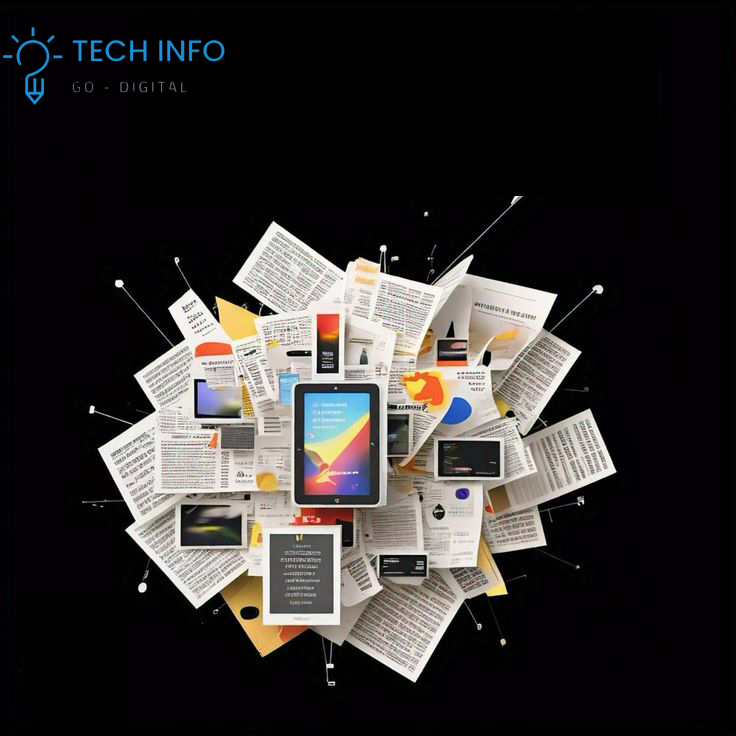
The Biggest AI Breakthroughs of May 2024: What You Need to Know The AI revolution is moving at lightning speed, and May 2024 delivered some jaw-dropping innovations that could reshape entire industries. Here’s your quick rundown OpenAI’s GPT-4o: Real-Time, Emotionally Intelligent AI OpenAI launched GPT-4o (“o” for omni), a multimodal powerhouse that understands text, audio, and vision simultaneously. It’s faster, more conversational, and can even pick up on emotions in your voice. We’re one step closer to truly natural AI interaction. AI Breakthroughs Google’s Project Astra: Your Eyes and Brain on AI Think Google Lens on steroids. Project Astra is an AI assistant that sees through your camera, understands context, and helps you in real time. From diagnosing hardware issues to recognizing your surroundings, it’s your pocket-sized genius. Meta’s Llama 3 + AI Personas: Open-Source with Personality Meta dropped Llama 3, its most capable open-source model yet, alongside quirky AI characters (including a sarcastic one). The open-source AI space just got a lot more competitive—and a lot more fun. Microsoft’s Copilot+ PCs & “Recall” Feature: Memory Meets AI Microsoft’s new Copilot+ PCs come with Recall, an AI feature that can remember everything you’ve done on your machine. It’s like having a time machine for your screen—but raises some serious privacy questions. AI Breakthroughs DeepMind’s AlphaFold 3: The Future of Biotech Google DeepMind upgraded its groundbreaking tool: AlphaFold 3 can now model proteins, DNA, and RNA—paving the way for faster drug discovery and breakthroughs in medicine. OpenAI’s Sora Eyes Hollywood: AI-Generated Films Incoming? OpenAI’s Sora, a text-to-video AI model, is being quietly tested in Hollywood. Could this be the beginning of AI-powered cinema? Don’t be surprised if your next favorite film was written and directed by a machine. AI Ethics & Regulation: The Gloves Are Off Governments are waking up. The EU’s AI Act is rolling out, and the U.S. is tightening regulation. As innovation accelerates, so does the tug-of-war between safety and progress. 💡 Why This Matters These aren’t just flashy headlines—they’re shaping the future of work, creativity, science, and society. With AI moving from labs to daily life, the question isn’t “what’s next,” but: are we ready for it?
Windsurf says Anthropic is limiting its direct access to Claude AI models

The Claude API Crackdown: Anthropic’s Strategic Shift and the Ripple Effects Across AI AI models: A Watershed Moment for AI Accessibility The AI industry is undergoing a fundamental transformation as leading model providers transition from open ecosystems to walled gardens. Anthropic’s recent restrictions on Claude API access through platforms like Windsurf represent more than just a policy change – they signal a paradigm shift in how advanced AI will be commercialized and controlled. This comprehensive analysis examines: Section 1: The Anatomy of Anthropic’s Decision 1.1 The Safety-First Imperative Anthropic’s “Constitutional AI” framework creates unique constraints: 1.2 The Economics of Scale Operating frontier models requires staggering resources: 1.3 The Performance Calculus API restrictions correlate with measurable quality improvements: Section 2: The Platform Fallout – Beyond Windsurf 2.1 The API Dependency Spectrum Platforms are affected differently based on integration depth: Platform Type Impact Severity Migration Cost Strategic Options Thin Wrappers (Basic UI on Claude) Critical Low Pivot or shutdown Augmented Services (Value-added features) High Medium Model switching Multi-Model Systems (Claude as one option) Moderate Variable Rebalance weighting 2.2 The Substitution Challenge Alternative model integration isn’t plug-and-play: 2.3 The Financial Ripple Effects Downstream economic impacts are emerging: Section 3: The New Model Ecosystem 3.1 The Enterprise Gateway Model Anthropic is pioneering a tiered access framework: 3.2 The Open Source Countermovement Community-driven alternatives are accelerating: 3.3 The Hybrid Future Forward-thinking platforms are adopting: Section 4: Strategic Playbooks for Affected Companies 4.1 The Negotiation Framework Securing continued access requires: 4.2 The Technical Migration Path Successful transitions require: 4.3 The Business Model Pivot Alternative monetization strategies: Section 5: The Road Ahead – Projections to 2025 5.1 The Coming Access Tiering Expected market segmentation: 5.2 The Regulatory Domino Effect Upcoming policy changes: 5.3 The Consolidation Wave Market structure predictions: Navigating the New AI Order The Claude API restrictions represent an inflection point that demands strategic reassessment. Successful adaptation requires:AI models For Platforms: For Developers: For Enterprises: The AI market is entering an era of managed access and controlled growth. While challenging, this transition may ultimately lead to more sustainable, safe, and economically viable AI ecosystems. The winners will be those who adapt quickly, negotiate strategically, and build resilient technical architectures.
Irish fintech NomuPay lands $40M at a $290M valuation from SoftBank
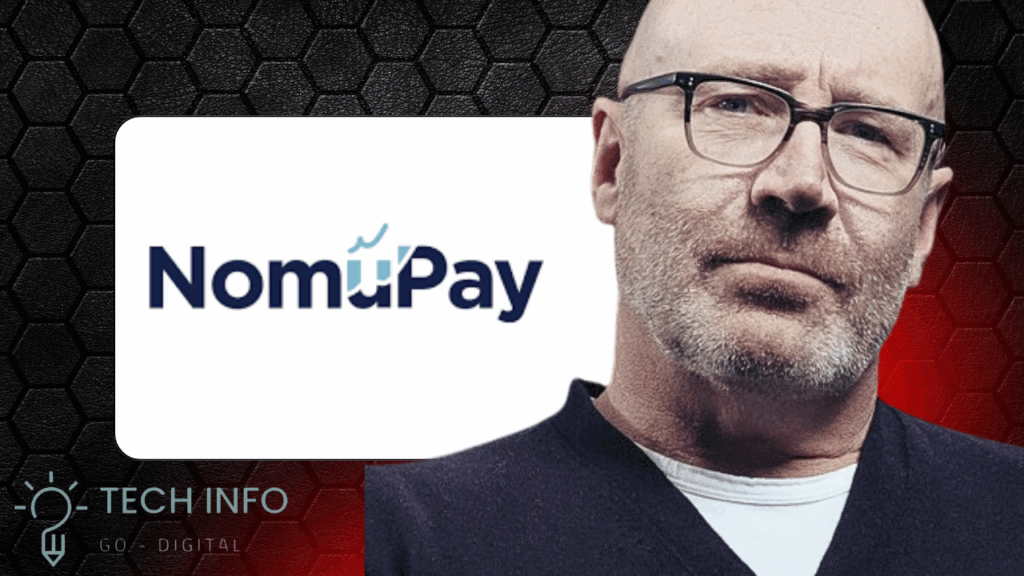
NomuPay Secures $40M from SoftBank at $290M Valuation: A Deep Dive into the Irish Fintech’s Rise The fintech industry continues to witness groundbreaking investments, and the latest headline-maker is NomuPay, an Irish payments startup that has just secured $40 million in funding from SoftBank, catapulting its valuation to $290 million. This strategic investment underscores the growing confidence in NomuPay’s innovative payment solutions and its potential to disrupt the global fintech landscape. In this blog post, we’ll explore: 1. Who is NomuPay? Company Overview NomuPay is an Ireland-based fintech startup specializing in next-generation payment solutions. The company focuses on cross-border payments, merchant services, and digital banking infrastructure, catering to businesses looking for seamless, cost-effective transaction processing. Founding & Evolution NomuPay was founded with the vision of simplifying global payments for businesses, particularly SMEs and e-commerce platforms. The company has built a scalable, API-driven payment infrastructure that enables faster settlements, lower fees, and enhanced security compared to traditional banking systems. Key Offerings NomuPay’s technology has already gained traction in Europe, Asia, and emerging markets, positioning it as a strong contender in the competitive payments sector. . SoftBank’s $40M Investment: What It Means for NomuPay Deal Breakdown Why SoftBank Invested SoftBank’s investment signals strong confidence in NomuPay’s ability to scale in the high-growth fintech space. The Japanese investment giant has a history of betting on disruptive payment companies, and NomuPay’s technology stack, global ambitions, and strong leadership team likely played a key role in securing this funding. Use of Funds NomuPay plans to allocate the fresh capital towards: This funding will help NomuPay compete with giants like Stripe, Adyen, and Checkout.com while carving out its niche in cross-border payments. 3. NomuPay’s Market Position & Competitive Edge Competitive Landscape The global payments industry is dominated by: NomuPay differentiates itself by:✔ Focusing on underserved markets (SMEs in emerging economies)✔ Lower transaction costs compared to legacy providers✔ Faster settlement times through blockchain-inspired tech✔ Strong compliance & licensing (key for cross-border transactions) Growth Metrics While exact revenue figures aren’t public, NomuPay has reportedly: This growth trajectory makes it an attractive bet for investors like SoftBank. 4. Future Growth & Expansion Plans Target Markets NomuPay is eyeing expansion in: Product Roadmap IPO Potential? If NomuPay maintains its growth rate, an IPO by 2026-2027 is plausible, following the path of companies like Adyen and Wise. . The Broader Fintech Investment Trend Why Payments Startups Are Hot SoftBank’s Fintech Bet SoftBank has doubled down on fintech with investments in: NomuPay’s Journey Ahead NomuPay’s $40M funding round at a $290M valuation is a major milestone, validating its potential to become a global payments leader. With SoftBank’s backing, the company is well-positioned to expand into high-growth markets, enhance its tech stack, and challenge established players. For fintech enthusiasts, investors, and businesses, NomuPay is a startup to watch closely—it could very well be the next big thing in payments. What do you think? Will NomuPay become the next Stripe, or will competition prove too fierce? Let us know in the comments!
Elon Musk’s Neuralink raises $600M at $9B valuation
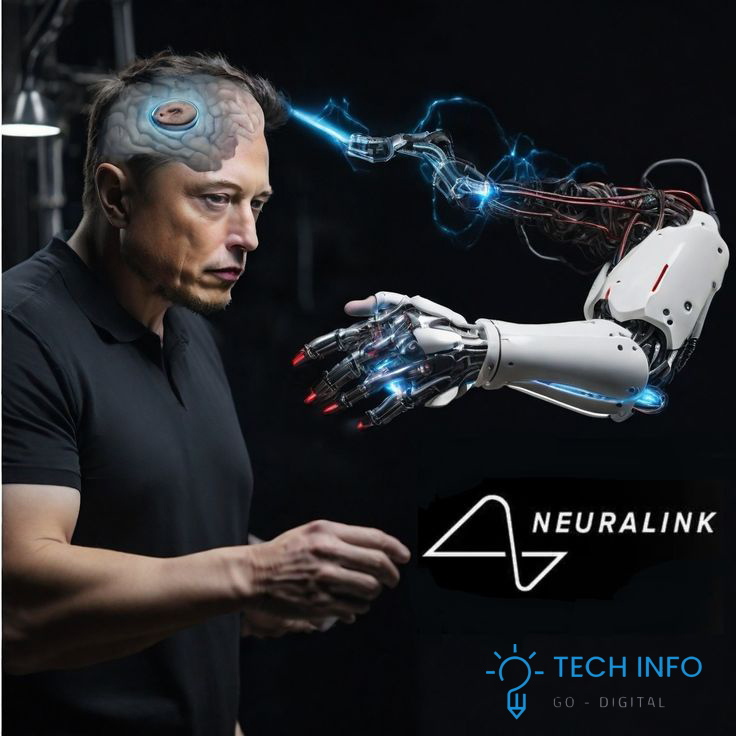
Introduction Neuralink’s $600M Funding Milestone: Redrawing Humanity’s Technological Frontier The neurotechnology sector witnessed a seismic shift this week as Elon Musk’s Neuralink Corporation announced a $600 million Series D funding round at a $9 billion valuation. This landmark investment – one of the largest single rounds in neurotech history – arrives as the company prepares for commercial deployment of its N1 brain-computer interface (BCI) system. The financing positions Neuralink to accelerate human trials, expand manufacturing capabilities, and develop next-generation neural implants that could redefine human-machine interaction within this decade.Elon Musk’s Neuralink raises $600M at $9B valuation I. The Neuralink Vision: From Sci-Fi to Clinical Reality Founded in 2016, Neuralink operates at the intersection of neuroscience, robotics, and artificial intelligence. The company’s core technology centers on ultra-high bandwidth BCIs designed to create a symbiotic relationship between biological and artificial intelligence. TheElon Musk’s Neuralink Recent FDA approvals for limited human trials in paralysis treatment (2024) and early-stage epilepsy management (2025 Q1) demonstrate growing regulatory confidence. The company’s PRIME Study (Precise Robotically Implanted Brain-Computer Interface) has enrolled 12 quadriplegic participants across three U.S. medical centers as of May 2025. II. Decoding the $9B Valuation: Investor Confidence Breakdown This funding round’s architecture reveals strategic priorities: Investment Allocation Percentage Key Objectives Clinical Trials Expansion 35% Quadruple trial sites to 48 by 2026 Manufacturing Scale-up 30% Achieve 10,000 implants/year capacity R&D Acceleration 25% Develop visual cortex interface prototypes Regulatory Compliance 10% Global certification pathways Notable investors include: The valuation multiple (15x projected 2026 revenue) reflects confidence in Neuralink’s first-mover advantage in the $37B neuroprosthetics market projected by 2030 (Grand View Research). III. Transformative Applications: Beyond Medical Miracles A. Medical Frontiers (2025-2030) B. Human Enhancement Horizon (2030+) C. AI Symbiosis Musk’s vision of “consensual telepathy” aligns with Neuralink’s AI alignment research division, developing neural feedback loops to prevent AI value drift. IV. The Thorny Path: Technical and Ethical Challenges Technical Hurdles Ethical Quagmires Recent controversies include FDA scrutiny over primate trial disclosures (2023) and neuroethicist protests at trial sites. Neuralink’s response includes establishing an independent Neuroethics Board (April 2025) with $10M annual funding.Elon Musk’s Neuralink raises $600M at $9B valuation Elon Musk’s Neuralink V. The Neurotech Arms Race: Competitive Landscape Neuralink’s funding dwarfs competitors but faces formidable rivals: Company Technology Funding Stage Synchron Stentrode $145M FDA-approved stroke rehab Paradromics Connexus Array $85M Chronic pain trials Blackrock Neurotech NeuroPort $65M 35+ years human experience Facebook Reality Labs Wrist-based BCI N/A Consumer AR integration Neuralink’s edge lies in wireless operation and Musk’s vertical integration capabilities through Tesla (power systems) and SpaceX (advanced materials).Elon Musk’s Neuralink raises $600M at $9B valuation Conclusion: The Neuralink Inflection PointThis funding round accelerates three critical timelines: As Neuralink prepares its Fremont manufacturing facility for mass production, the world stands at the threshold of a new era in human evolution. While technical and ethical challenges remain formidable, this $600M vote of confidence suggests the neural revolution isn’t coming – it’s being surgically implanted. Call to Action Follow Neuralink’s progress through their official trial updates and participate in the neuroethics discourse shaping our collective future. The conversation about what it means to be human in the age of machine integration starts now – and it’s happening directly inside our skulls.Elon Musk’s Neuralink raises $600M at $9B valuation
Apple CEO reportedly urged Texas’ governor to ditch online child safety bill

Apple CEO Urges Texas to Drop Child Safety BillApple CEO Urged Texas Governor to Ditch Online Child Safety Bill: A Deep Dive In a recent development that has stirred debate among tech giants, policymakers, and child safety advocates, Apple CEO Tim Cook reportedly urged Texas Governor Greg Abbott to abandon a proposed online child safety bill. The legislation, aimed at protecting minors from harmful content and exploitation on digital platforms, has faced pushback from major tech companies, including Apple. This blog post explores the details of the bill, Apple’s stance, the implications for online safety, and the broader debate over balancing privacy, corporate interests, and child protection. Understanding the Texas Online Child Safety Bill The proposed Texas legislation, similar to other state-level bills like California’s Age-Appropriate Design Code, seeks to impose stricter regulations on digital platforms to protect children from harmful content, data collection, and online exploitation. Key provisions of the bill may include: Supporters argue that such measures are necessary to combat rising cyberbullying, mental health issues linked to social media, and online predation. However, critics, including major tech firms, claim these regulations could infringe on privacy, stifle innovation, and create compliance challenges. Apple’s Opposition: Why Did Tim Cook Intervene? According to reports, Apple CEO Tim Cook personally lobbied Governor Abbott to oppose the bill. While Apple has positioned itself as a leader in user privacy and security (e.g., with features like App Tracking Transparency), its resistance to this legislation raises questions. Possible Reasons Behind Apple’s Stance: Cook’s Reported Argument: Sources suggest Cook emphasized that the bill could: The Broader Debate: Child Safety vs. Privacy & Innovation This situation highlights a growing tension between: Pro-Regulation Perspective: Anti-Regulation Perspective: Potential Consequences if the Bill Is Scrapped If Apple and other tech lobbyists succeed in stopping the bill: Alternatively, if the bill passes despite opposition: Where Should the Line Be Drawn? The reported intervention by Apple’s CEO underscores the delicate balance between protecting children online and preserving digital privacy and innovation. While child safety is a universal priority, the methods to achieve it remain hotly contested. Key Takeaways:
Signal’s new Windows update prevents the system from capturing screenshots of chats

Signal’s New Windows Update Blocks Screenshots of Chats: A Leap Forward in Messaging Privacy In an era where digital privacy is under constant threat, Signal has once again demonstrated its unwavering commitment to secure communication. The latest Windows update from Signal introduces a powerful new feature: screenshot prevention for chats. This seemingly small update has sparked significant conversations among users, cybersecurity experts, and privacy advocates alike. In this blog, we explore what this update entails, why it’s a big deal, how it works, and what it means for the future of private messaging What’s New in the Signal Windows Update? Signal, the privacy-focused messaging platform known for its end-to-end encryption, recently rolled out an update to its desktop app on Windows. This update includes a notable security feature that prevents the operating system from capturing screenshots of open chats. This feature works similarly to the “Screen Security” option already available in the Android version of the app. When enabled, the screen contents of Signal chats are blocked from being recorded or captured using screenshot tools—either manual screenshots or third-party screen recording apps. While this might seem like a minor enhancement, it’s actually a significant move towards safeguarding user privacy Why Screenshot Blocking Matters You might wonder, “What’s so dangerous about screenshots?” After all, it’s just a still image of a conversation. But that’s precisely the issue. Screenshots can be easily taken, stored, and shared without the knowledge or consent of the participants in a conversation. Here are some real-world risks associated with chat screenshots: By blocking screenshots, Signal adds a layer of control and protection for its users, ensuring that their conversations stay private and secure. How Does It Work? The technology behind screenshot prevention on Windows is quite clever. Signal uses an OS-level flag or window property that tells the operating system, “Do not allow this window’s contents to be captured.” This API or system call essentially disables the ability for third-party applications or screen capture tools to access the visual output of the chat window. On Android, a similar technique is used where the app sets a specific flag on the view (FLAG_SECURE), which prevents the screen content from being captured in screenshots or appearing in the list of recent apps. On Windows, the mechanism is different, but the principle is the same—Signal instructs the system to block visual output of the chat window from any software trying to capture it. This is especially useful in work environments or shared computers where users may be concerned about screen-capturing malware or even curious colleagues. Who Benefits From This Feature? This feature is especially valuable to: In short, anyone who uses Signal to communicate sensitive, personal, or confidential information stands to benefit. How to Enable It If you’re using the updated Signal Desktop app on Windows, the feature might be enabled by default. If not, it’s easy to turn on: Once enabled, the app window will not allow any screenshots or screen recordings of your chats. Limitations and Workarounds As with any security feature, it’s important to recognize that no solution is 100% foolproof. Screenshot blocking has some limitations: That said, this feature significantly raises the barrier to casual privacy breaches. It deters the most common and easiest form of conversation leakage—screenshotting. A Bigger Move Toward Secure Messaging A Bigger Move Toward Secure Messaging Signal has always led the way in private communication. From pioneering end-to-end encryption to developing the Signal Protocol used by other apps like WhatsApp and Facebook Messenger, it’s clear that Signal isn’t just another messaging app. It’s a privacy-first platform. This new feature aligns with that philosophy. It reinforces the idea that what you say in a private conversation should stay private—and that includes your screen. Moreover, it may encourage other platforms to adopt similar protections. In today’s climate, where even tech-savvy users are increasingly wary of data exposure, privacy enhancements like these could become industry standards. Final Thoughts Signal’s decision to block screenshots on Windows isn’t just about technology—it’s about trust. By giving users more control over their data, Signal continues to build a platform that respects and protects privacy at every level. This update is a step in the right direction and signals a broader trend in the digital world. Privacy is no longer a niche concern; it’s a fundamental right. And Signal is making sure that right is respected—one feature at a time. Whether you’re an activist, a journalist, a professional, or just someone who values digital dignity, Signal’s latest update is a reason to feel a little more secure in your conversations.
Google tests replacing ‘I’m Feeling Lucky’ with ‘AI Mode’
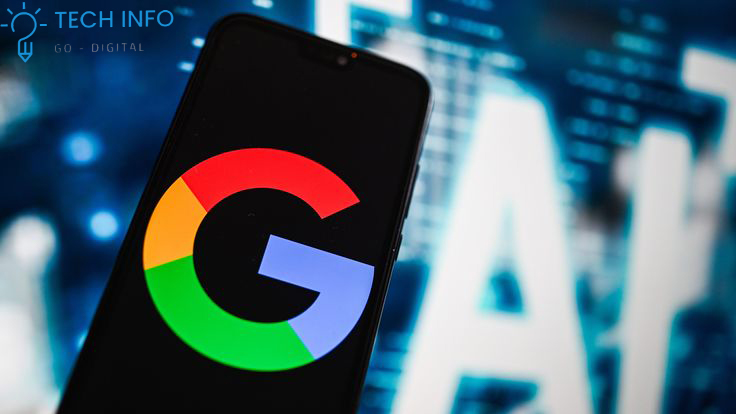
Google Tests Replacing ‘I’m Feeling Lucky’ With ‘AI Mode’: A New Era in Search Experience For over two decades, Google’s iconic “I’m Feeling Lucky” button has been a quirky, nostalgic feature on the search engine’s homepage—a playful nod to a simpler internet. But recent experiments suggest Google is preparing for a dramatic shift: replacing “I’m Feeling Lucky” with a new feature called “AI Mode.” This potential replacement marks more than a cosmetic update—it reflects a larger shift in how people interact with information online. As generative AI becomes more central to search, “AI Mode” could signify the dawn of a new, intelligent interface between users and the web.Google tests replacing In this blog, we’ll explore what “AI Mode” is, why Google might be replacing “I’m Feeling Lucky,” how this ties into the evolution of search, and what it means for the future of the internet. The End of an Era: “I’m Feeling Lucky” Before diving into AI Mode, let’s take a moment to remember what “I’m Feeling Lucky” represented. Introduced in the early days of Google, the button allowed users to skip search results and jump directly to the top-ranking page for a query. It embodied confidence in Google’s algorithm—no need for options, just the best match instantly. While rarely used (some reports estimate less than 1% of users clicked it), the button became a beloved easter egg and symbol of Google’s fun, user-friendly identity. Over time, it even gained alternate versions like “I’m Feeling Curious” or “I’m Feeling Playful” when users hovered over the button. But in today’s AI-driven landscape, “lucky guesses” aren’t good enough. Users want personalized, conversational, and smart results. This is where AI Mode comes in. What is “AI Mode”? Google has been quietly testing a feature called AI Mode with a small number of users. While Google hasn’t officially confirmed its full scope, early testers have reported that clicking “AI Mode” activates a generative AI interface, similar to what users might expect from tools like ChatGPT or Microsoft Copilot. Here’s what early insights suggest AI Mode might offer: In essence, AI Mode transforms Google from a search engine into an AI assistant—not just pointing users toward information, but engaging with them and delivering content directly. Why Replace “I’m Feeling Lucky”? At first glance, “AI Mode” and “I’m Feeling Lucky” might seem completely different, but there’s a symbolic connection between them. 1. Single-Click Simplicity “I’m Feeling Lucky” was about speed: click once, get the result. AI Mode offers a modern take—click once, get a full answer. It preserves the simplicity, but replaces static guessing with dynamic intelligence. 2. Changing User Expectations People no longer want just links—they want answers. With the rise of voice assistants, chatbots, and AI tools, users now expect web tools to understand context and generate content, not just direct them elsewhere. 3. Competitive Pressure Microsoft’s Bing has integrated GPT-4 into its search experience since early 2023. Google’s Bard (now Gemini) is also being integrated into Search. AI Mode might be Google’s answer to the “AI-first search” revolution that’s gaining traction. 4. Future-Proofing Search Search engines are evolving. With AI-generated summaries, visual responses, and conversational interfaces becoming mainstream, Google is positioning AI Mode as the default experience of tomorrow’s search. Google’s AI Push: Context Behind AI Mode The arrival of AI Mode isn’t happening in isolation—it’s part of a broader shift within Google toward AI integration across its entire product line. 1. Search Generative Experience (SGE) Announced at Google I/O 2023, the Search Generative Experience uses generative AI to provide quick overviews and insights. AI Mode seems like a more accessible, homepage-based version of SGE, aimed at everyday users. 2. Bard and Gemini Google launched Bard (now Gemini) to compete with ChatGPT, integrating it into Google Workspace, Android, and Chrome. AI Mode may be the next step in embedding Gemini-like capabilities directly into Search. 3. Android AI Features Android is rapidly incorporating AI, from smart reply suggestions to Magic Compose and real-time translation. “AI Mode” could be another interface layer that syncs with your Google account, search history, and app usage to offer personalized assistance. Benefits of AI Mode for Users Concerns and Criticisms Of course, this shift also raises some concerns: The Bigger Picture: A New Search Paradigm If AI Mode becomes the default or even widely available, it could redefine how billions of people access information online.Google tests replacing Search engines may no longer just index the web—they’ll interpret, condense, and personalize it. This will transform everything from SEO strategy to how news, education, and commerce websites present content. Marketers may need to optimize for AI visibility, not just search ranking. Publishers may need to work with structured data and ensure their content can be correctly cited by AI tools. A Shift From Lucky to Intelligent “I’m Feeling Lucky” was a relic of an earlier internet—one where the best result was just one click away. AI Mode reflects today’s reality: users want not just results, but relationships with their tools. They want intelligent, personalized, conversational experiences.Google tests replacing By testing AI Mode, Google is signaling that its homepage—arguably the most viewed page on the internet—is evolving. And with it, the future of search itself. Google tests replacing Whether you’re a casual Googler, a content creator, or a tech enthusiast, keep an eye on this shift. Because the next time you visit Google.com, you might not just be searching. You might be talking to an AI.Google tests replacing
Notion takes on AI-notetakers like Granola with its own transcription feature
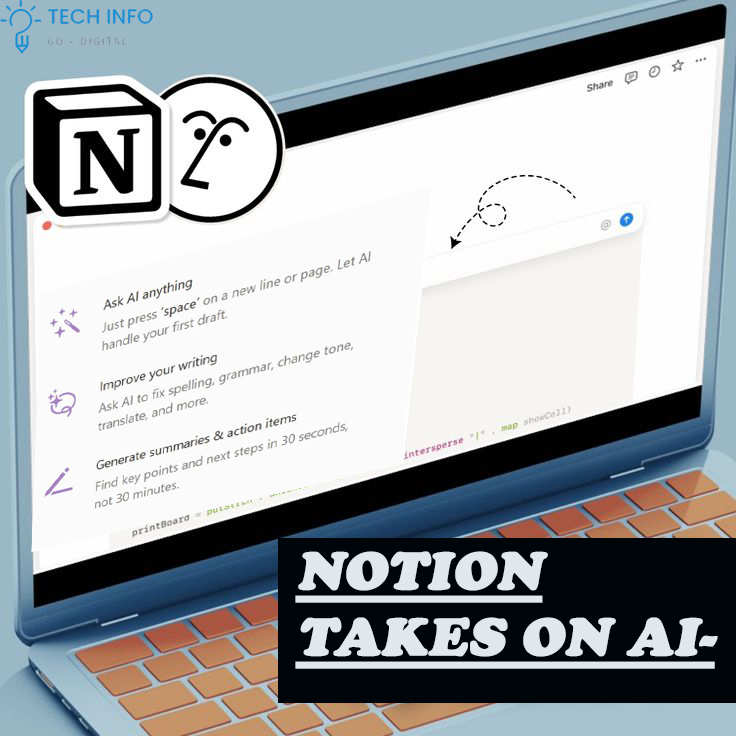
Notion Takes on AI Note-Takers Like Granola with Its Own Transcription Feature Notion Takes In the fast-evolving world of productivity tools, Notion has once again stepped up its game by introducing a built-in transcription feature, directly competing with-taking apps like Granola, Otter.ai, and Fireflies.ai. This move solidifies Notion’s position as an all-in-one workspace, eliminating the need for third-party integrations for voice-to-text conversions.Notion Takes But how does Notion’s new transcription tool stack up against dedicated AI note-takers? Let’s dive deep into its capabilities, limitations, and whether it can truly replace specialized apps. The Rise of AI-Powered Note-Taking Notion takes on AI-notetakers like Granola with its own transcription featureAI-driven transcription tools have become indispensable for professionals, students, and content creators. Apps like Granola (which focuses on AI-powered meeting summaries) and Otter.ai (known for real-time transcription) have dominated the space by offering: Notion, traditionally a text-first workspace, is now bridging the gap by integrating transcription directly into its platform—but with a slightly different approach.Notion Takes Notion’s New Transcription Feature: How It Works Notion’s transcription tool allows users to upload audio files (e.g., meetings, lectures, interviews) and convert them into text within a Notion page. Key features include: ✅ Accurate Speech-to-Text – Powered by advanced AI (likely Whisper or a similar model).✅ Seamless Integration – No need to switch between apps; transcripts live inside Notion.✅ Searchable & Editable – Full-text search and manual corrections.✅ Supports Multiple Languages – Useful for global teams. However, unlike Granola or Fireflies.ai, Notion does not yet offer: ❌ Real-time transcription (must upload pre-recorded files).❌ Automated meeting summaries (users must manually extract key points).❌ Speaker diarization (no automatic speaker separation). This makes Notion’s solution better suited for post-meeting documentation rather than live note-taking. Notion vs. Granola & Other AI Note-Takers Feature Notion Transcription Granola Otter.ai Fireflies.ai Real-Time Transcribe ❌ No ✅ Yes ✅ Yes ✅ Yes Speaker Identification ❌ No ✅ Yes ✅ Yes ✅ Yes AI Summaries ❌ No ✅ Yes ✅ Yes ✅ Yes Searchable Notes ✅ Yes ✅ Yes ✅ Yes ✅ Yes Works Inside Notion ✅ Yes ❌ No ❌ No ❌ No Free Tier Available ✅ (Limited) ✅ Yes ✅ Yes ✅ Yes Who Wins? Notion’s advantage? Centralization. If you already manage projects, wikis, and tasks in Notion, keeping transcripts in the same place is a major plus. Use Cases for Notion’s Transcription Limitations & Room for Improvement While Notion’s transcription is a strong first step, it lacks: 🔹 Live transcription (critical for real-time meetings).🔹 AI-powered insights (like sentiment analysis or action items).🔹 Deep integrations (e.g., auto-syncing with Zoom/Google Meet). If Notion adds these, it could dominate the AI note-taking space entirely. Final Verdict: Should You Switch? Notion isn’t fully replacing Granola or Otter.ai yet—but it’s getting closer. For now, power users might still need both. What do you think? Will you use Notion’s transcription, or stick with dedicated AI note-takers? Let us know in the comments! TL;DR Notion’s new transcription feature is great for storing and searching audio transcripts but lacks real-time AI note-taking capabilities. It’s best for post-meeting documentation, while apps like Granola and Otter.ai still lead in live transcription. Notion’s biggest advantage? Keeping everything in one workspace.

